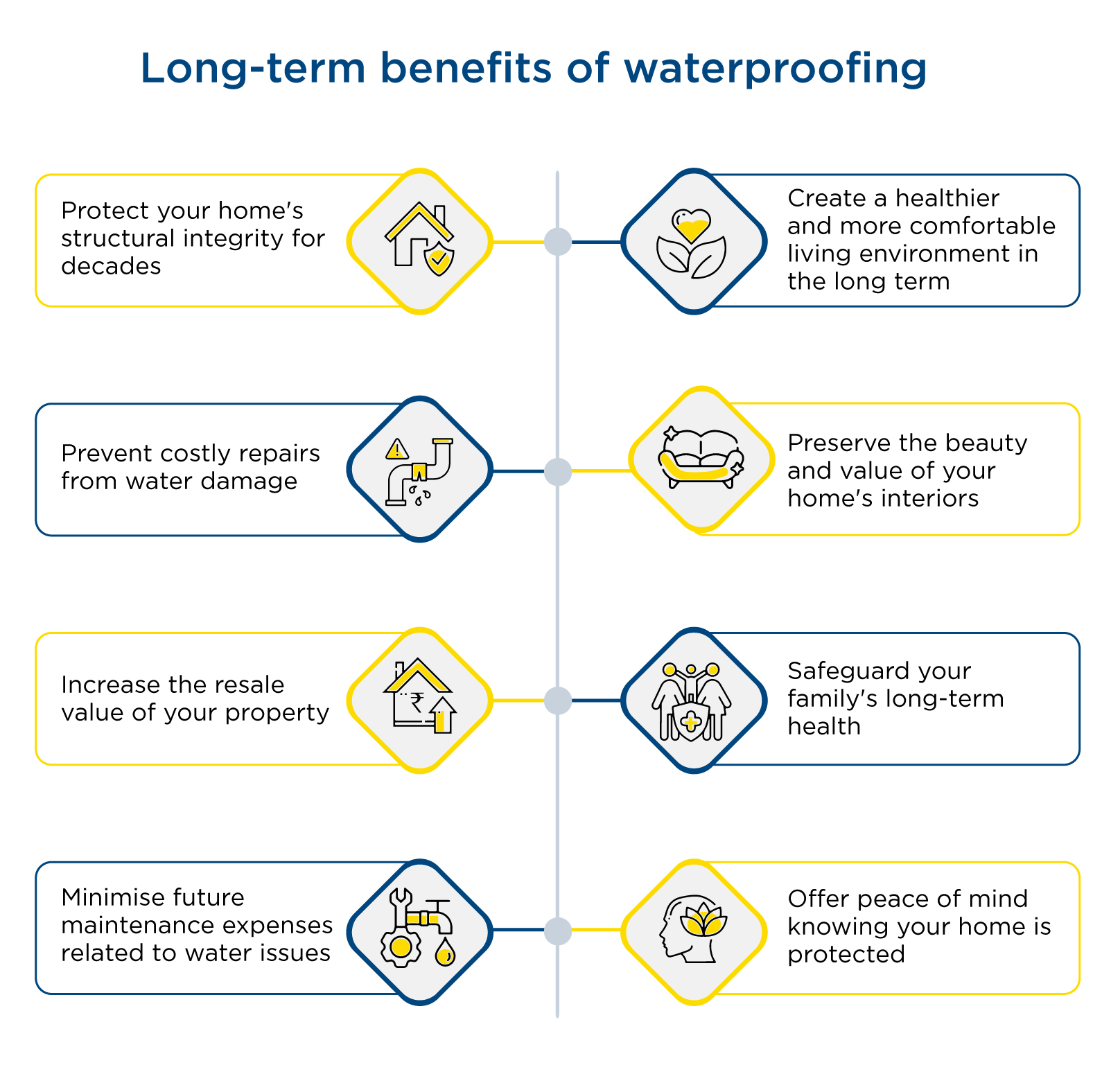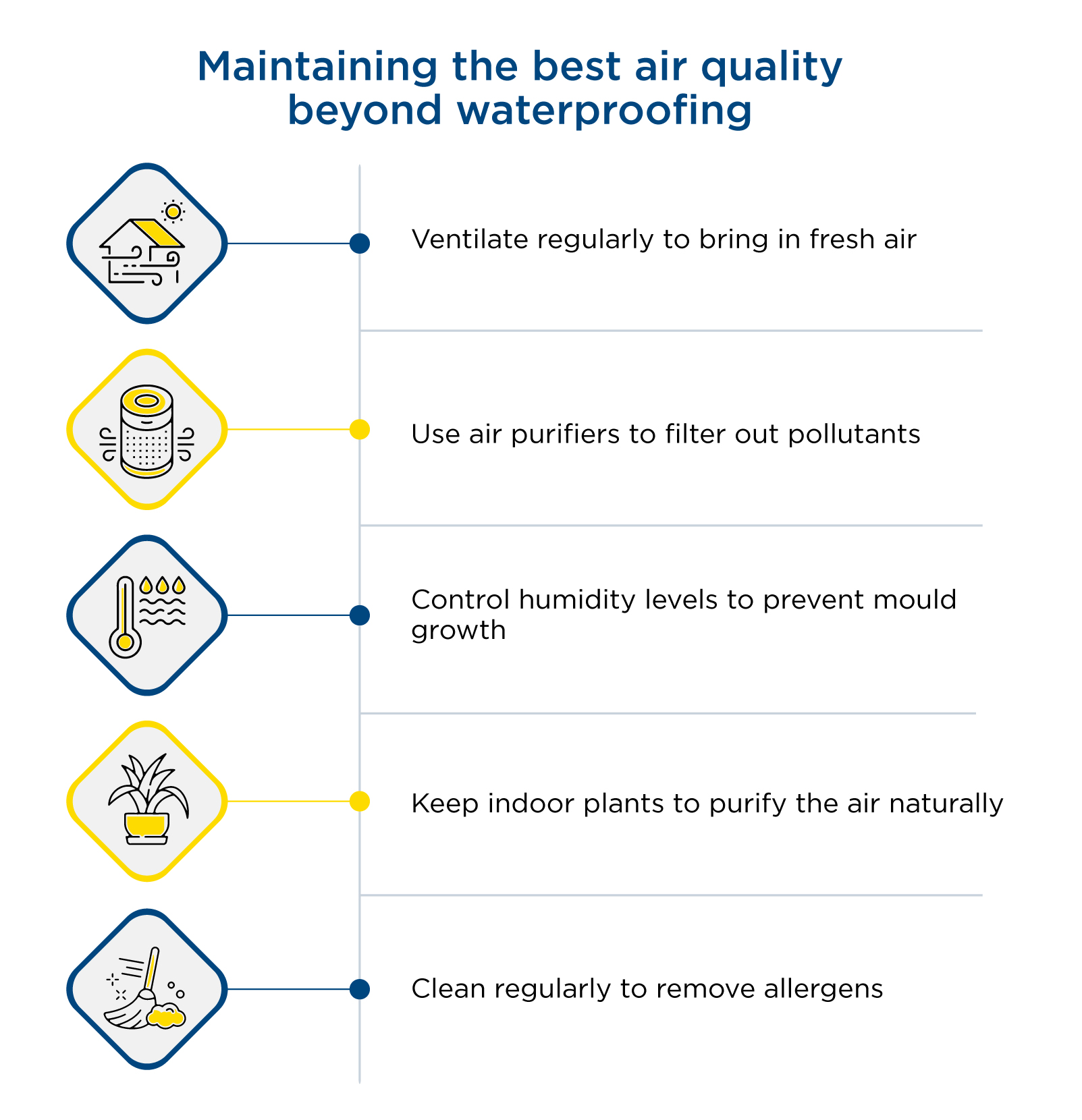
Renovation
How waterproofing can boost air quality in your home
Waterproofing improves the air quality at home by preventing moisture buildup and mould growth. Read on to learn how it can help maintain fresh, breathable air and a healthy living environment.
Everyone loves unwinding at home after a long work day—whether it’s taking a warm shower, lounging on a comforting couch, or simply breathing easy. But while you may be aware of outdoor pollution, it's also important to consider the air you breathe inside your home. The best air quality not only refreshes your mind but also contributes to your well-being. Surprisingly, maintaining air quality levels starts with something as fundamental as waterproofing.
Let’s explore how waterproofing affects air quality.
What happens when waterproofing is neglected?
Without proper waterproofing, your home becomes susceptible to issues that impact air quality. They can include –
- Seepages and leaks
Water finds its way through cracks in walls and roofs without waterproofing. It leads to moisture buildup.
- Mould and mildew growth
Damp conditions encourage mould and mildew. They release spores into the air and reduce air quality levels. This can cause respiratory issues like asthma and allergies.
- Unpleasant odours
Moisture causes a musty smell that makes your living space feel stale and uncomfortable.
- Allergen triggers
Damp environments attract mites and insects that carry allergens. They can worsen conditions for those with respiratory problems.
- Health risks
Mould spores, allergens, and poor ventilation can cause long-term health implications, such as respiratory stress and hay fever symptoms.
Ignoring waterproofing can lead to several problems that compromise your home's air quality.
Why and how you can ensure freshness in your home
Waterproofing is the cornerstone of maintaining fresh, breathable air inside your home. Here’s how it helps improve and sustain air quality –
- Prevents moisture accumulation
Proper waterproofing solutions prevent moisture from seeping through walls and roofs. Thus, keeping your home dry eliminates the root cause of mould and mildew, assuring the best indoor air quality.
- Protects interiors from water damage
Waterproofing prevents seepage and damage that could compromise your home’s structural integrity. Keeping your walls and ceilings intact can create a clean, mould-free environment, which helps maintain indoor air quality.
- Reduces humidity
Excessive humidity contributes to poor air quality. Waterproofing your home reduces indoor humidity by preventing water intrusion. As a result, you can enjoy consistently fresh and healthy air in your living spaces.
- Blocks entry of allergens and pollutants
Waterproofing minimises the chances of pests, mites, and insects entering your home. These intruders are known to carry allergens and diseases that affect air quality. A sealed, waterproof home creates a safe and hygienic indoor space.
Breathe fresh, live healthy—waterproof now!
Waterproofing is essential to achieving the best air quality, but it often goes unnoticed. It prevents moisture, mould, and allergens for a healthier home. Connect with the experts at Dr. Fixit today to learn more about how waterproofing can transform your home into a haven of fresh air. Fill out the form below, and let Dr. Fixit help you maintain air quality in your home.
Get Professional Waterproofing Solutions Today
Fill The Form below to took free site evaluation by Dr. fixit point safe painting service expert

